Communicating—In So Many Ways—About the Changing Climate
By Rebecca GoldfineStudents are sharing their thoughts about environmental threats and climate change—and possible solutions—in a creative outpouring of haikus, op-eds, art, memes, social media, and limericks. A lot of limericks. (Two examples below.)
“I [heart] Earth,” by Zoe Stonorov ’25
“On Dwindling Funding for Roads,” by Harper Stevenson ’27
Roads in Vermont—they are crumbling
for the money, the state gov is fumbling
floods make it all worse
Trump won't reimburse
and the people are left stumbling.
“Words matter.”—Professor Ayana Elizabeth Johnson
Throughout the semester, students in the environmental studies course Communicating Climate Change experimented with many forms of expression. Each week, their professor, Roux Distinguished Scholar Ayana Elizabeth Johnson, asked them to channel their knowledge and emotions about the environment through different media.
In response, they created a body of disparate, imaginative, artful, thoughtful, and sometimes multicolored dispatches. The theme knitting these all together: how to persuade people to take part in climate solutions. In her course syllabus, Johnson asks, “How, as the climate crisis accelerates, can we help people understand the risks and solutions, and welcome them into shaping the future? How do we not only inform, but de-jargonize, engage, and entertain?”
Examples of assignments for Environmental Studies 3911: Communicating Climate Change
- Craft a social media post about a climate solution (bonus points if it goes viral). Here's an example.
- Write a limerick, haiku, rap, or sonnet about greenwashing.
- Critique a movie with a climate theme.
- Conduct an interview with someone working on a climate solution.
- Create an art project in the form of a poem, rap, video, painting, sculpture, song, etc.
- Write (and in some cases, publish) an op-ed (and then write a limerick about your op-ed). [Johnson is on a personal quest to bring back the limerick.]
- Find and develop climate memes or jokes.
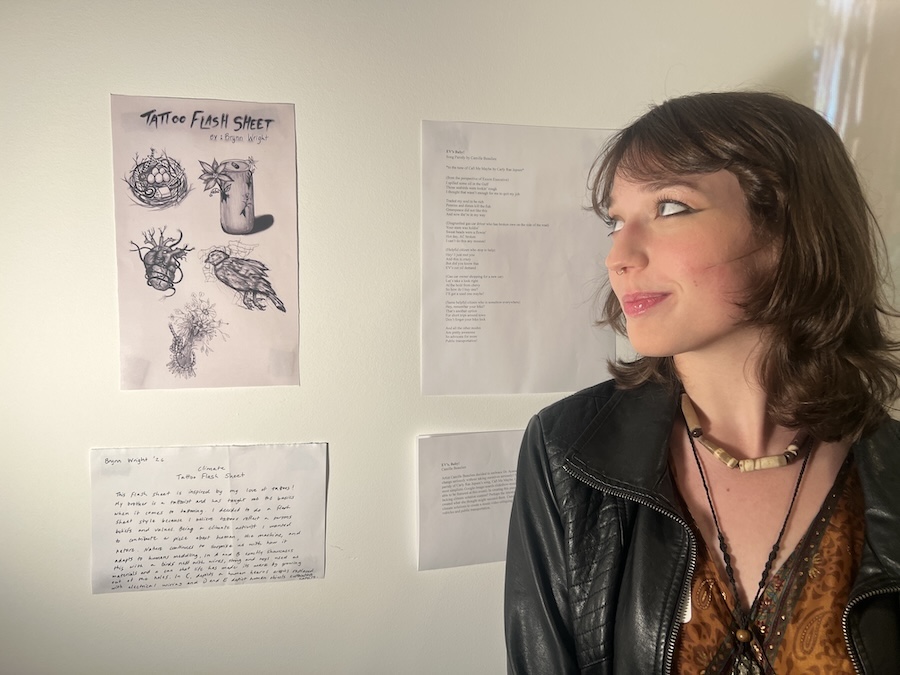
Scars on a body: Brynn Wright ’26 drew climate change tattoo art, sketching a nest laced with litter, weeds growing from a crumpled soda can, a heart ensnarled in electrical wire, a noose around a bouquet, and other stark images. Tattoo art, she said, “is a way to wear your scars on your body, a way to be at peace with the darkness—like fear and hopelessness—that might be inside you.”
Ben Norwood ’25 wrote and performed a spoken-word poem called “We shake our heads remembering,” which imagines a future in which we get things right. (His title references page 429 of Johnson's recent book, What If We Get It Right? Visions of Climate Futures.)
“...i hear the buzz of bikes and giant dragonflies/soaring down, down, down the old highway lines/over red woods! bluebells! white oaks! and wind turbines!/because bullet was just one of many words we re-defined: we attached it to trains, solar-powered planes and ivy vines…/stitching sunflower seeds into streets free/of the cars we buried!/i barely know what combustion used to be...” — An excerpt from “We shake our heads remembering,” by Norwood.
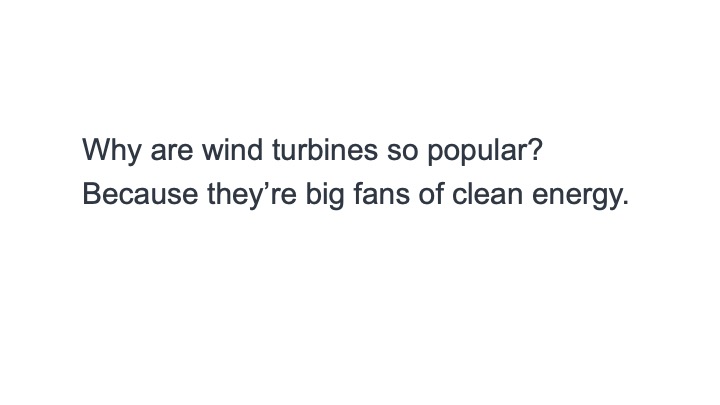
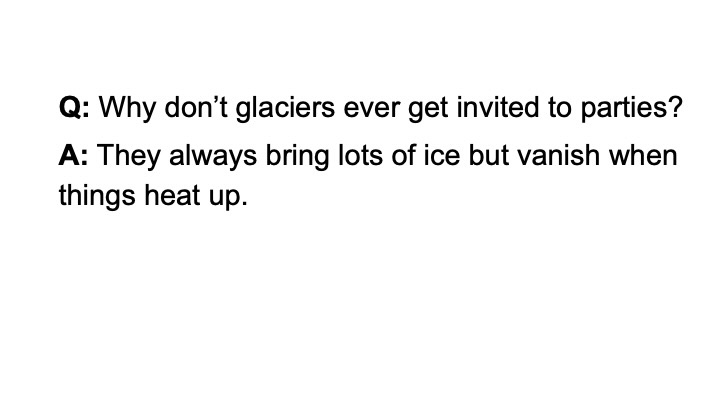
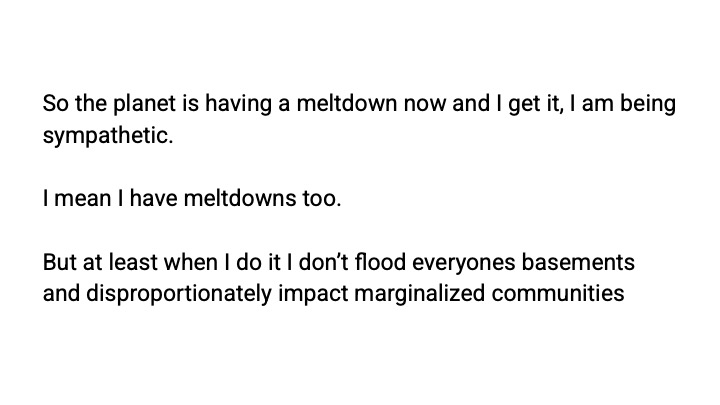
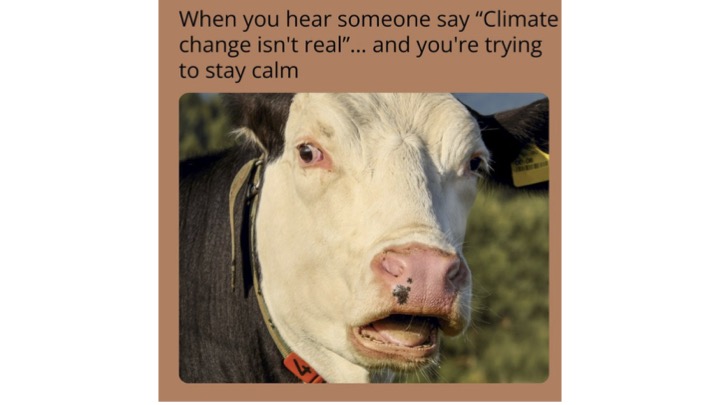
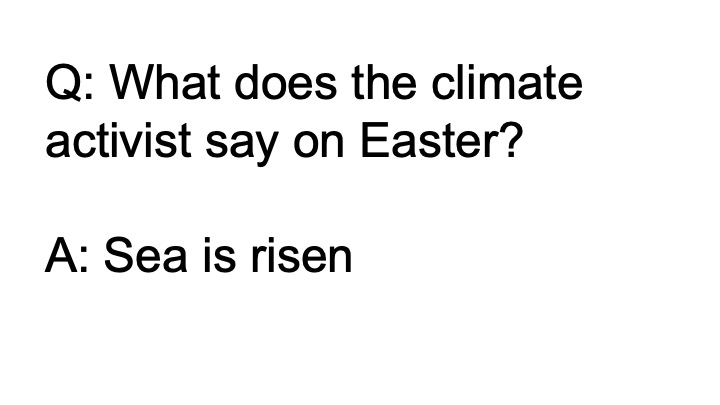
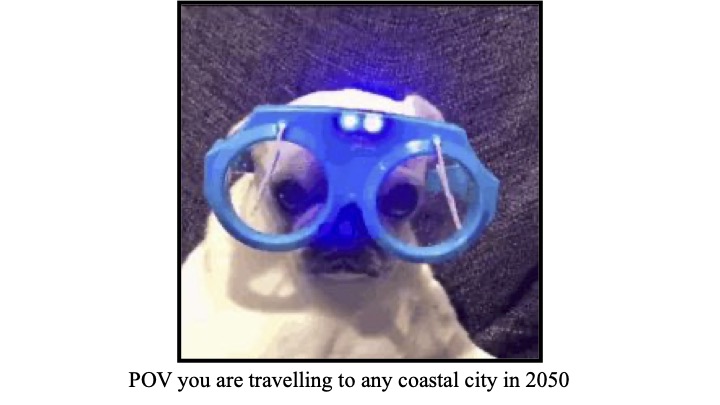
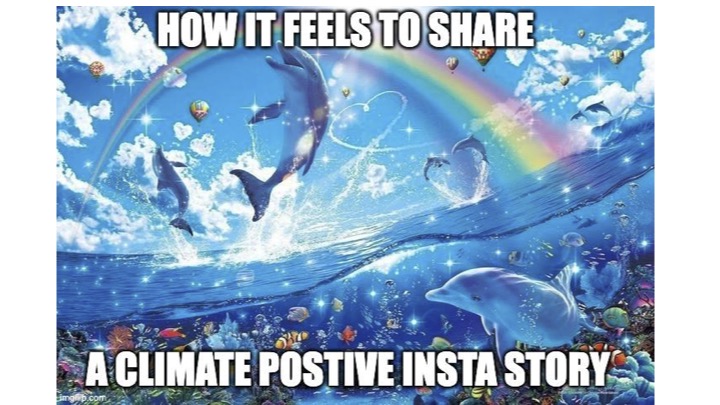
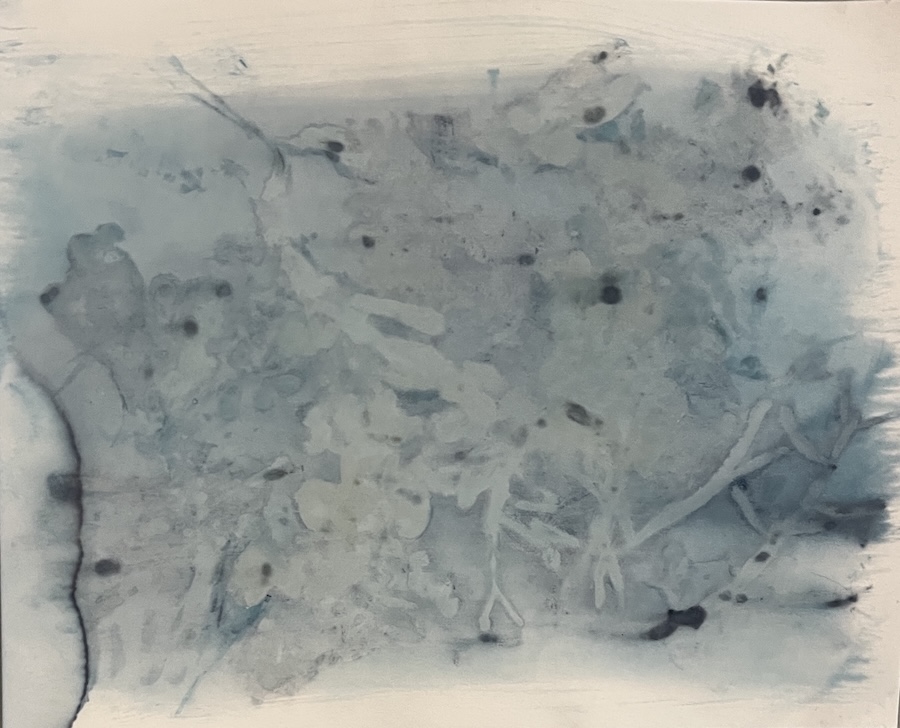
A Place for All Voices
Norwood, an English and environmental studies major, and government minor, said he enrolled in Johnson's class because he saw it as “the culmination” of his Bowdoin degree.
Several students published op-eds that they wrote for a Communicating Climate Change assignment.
- Women are well suited to lead on climate issues, Portland Press Herald, by Zoe Peterson ’25
- President Trump is not pro fish and he isn't pro fishermen, Anchorage Daily News, by Zoe Storonov ’25
- Reckless NOAA cuts endanger Maine, Portland Press Herald, by Kyle Pellerin ’26
- Care About Climate Change? Protest. Portland Press Herald, by Violet Apodaca ’25
- Bowdoin, enough with the merch!, The Bowdoin Orient, by Camile Beaulieu ’25
- Bowdoin's extra million pounds of waste, The Bowdoin Orient, by Evan Hatcher ’27
“I have been thinking a lot in the last four years about how we can combine effective scientific writing with more creative writing to find a wider audience,” he said.
His dream is to one day read—or to write—a new work that is as galvanizing as Rachel Carson’s 1962 The Silent Spring. Carson’s book set off the environmental movement and is credited with providing the impetus for the establishment of the US Environmental Protection Agency in 1970.
“Professor Johnson’s class,” he added, “is all about that.”
Miles Berry ’25, another student in Johnson’s class this semester, said he appreciated being stretched as a writer. An English and Hispanic studies major, he is the managing editor for The Bowdoin Orient and is interested in pursuing a journalism career.
“For myself, personally, it was good to get out of the very one-track just-writing-articles thing,” he said, “because the media landscape is a lot more complex than that. So this was good training for me to expand my horizons—there are lot of different media I can, and should, and maybe need to be using.”
Berry explained that the point of being given such an assortment of assignments was so students could practice adapting their voices to reach a wide audience of people consuming diverse media and who respond to different types of messaging.
(Berry noted that he was fairly pleased with how his own greenwashing limerick came out, about espresso pods. “I'm proud of my morning espresso/Pods are recycled, the company said so/But after looking it up, I almost spat out my cup/This coffee tastes more like depresso,” he recited.)
When Norwood was asked if he thinks he’s better equipped to change people's hearts and minds on climate action now that he's finished Johnson’s class—and wrapping up his Bowdoin education—he sank into a big sigh.
“I hope? I think. It's really hard, oh geez,” he said. But while his response began on an uncertain note, it ended upbeat. He is, after all, a self-described “eternal optimist.”
Johnson's students each selected a song for a climate playlist that could serve as a soundtrack to climate action.
Lily Echeverria ’26 also took Communicating Climate Change this spring. She noted that the variety of projects throughout the semester helped students find their own communication niche. An aspiring journalist—and possible future rap star—she said she learned that “there's space for everyone in the fight against climate change!”
Her greenwashing rap threw daggers at a soda company:
Oh Coca Cola how you disappoint me
Though you talk big talk
Your morals are key
You’ve got marketing game and swanky ads, too
But consumers and I can see right through you
“Classic puffery” is what you call your tactics
I’ve turned your greenwashing into didactics
You’re the biggest plastic polluter in the whole world
Now your legacy has finally been unfurled
Take this as a lesson Mr. Big Corporation
Towards true green practices you really should hasten!!!!